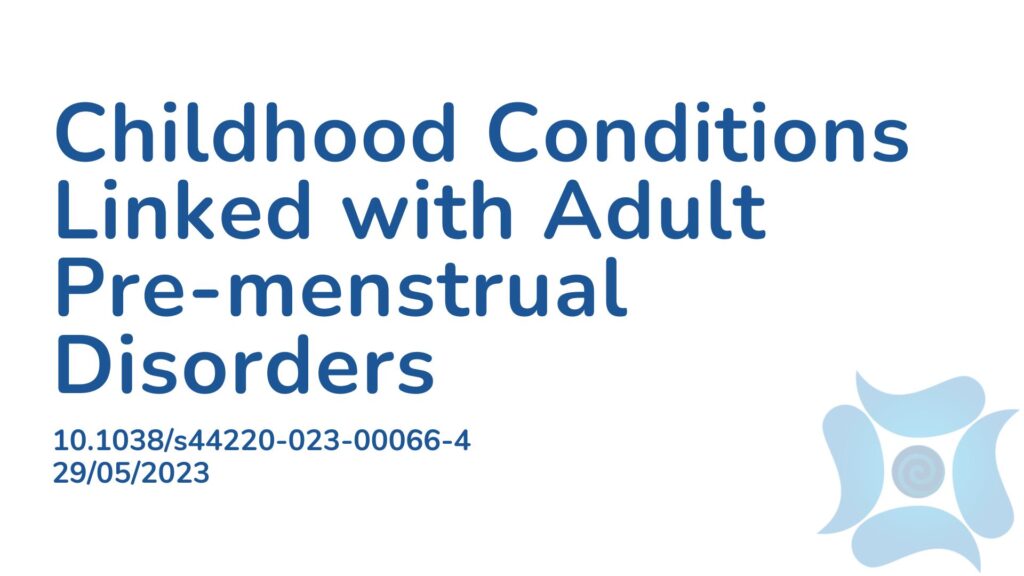Summary:
Premenstrual disorders (PMDs) are a group of conditions that are related to symptoms in the days leading up to menstruation. Premenstrual syndrome (PMS) and premenstrual dysphoric disorder (PMDD) are two types of PMDs, ranging in severity. These conditions impact millions of women globally, with many experiencing symptoms since adolescence, suggesting the importance of early-life risk factors in their development. Menstruation involves an inflammatory response, as well as inflammation playing a role in hormonal changes. Some inflammatory markers linked to PMDs are also implicated in asthma and allergies, common conditions characterized by allergic inflammation from early childhood. It is therefore plausible that dysregulated immune function could contribute to asthma/allergies and, subsequently, to PMDs. This study investigates whether children with asthma or allergies have an elevated risk of developing PMDs in adulthood. In comparison to girls without asthma, those with asthma exhibited an elevated risk of PMDs and increased symptoms. The link with PMDs was also statistically significant for food allergies in infants. These findings indicate that individuals with a history of childhood asthma or food allergy are at an elevated risk of experiencing PMDs in adulthood.
Abstract:
Emerging evidence suggests inflammation is involved in the development of premenstrual disorders (PMDs). We assessed whether childhood asthma and allergies, as inflammatory conditions that may share etiology with PMDs, are associated with risk of PMDs in adulthood. We conducted a prospective cohort study of 6,524 girls in the Growing Up Today Study between 1996 and 2013. Self- and mother-reported diagnoses of asthma and allergies before age 18 were assessed at baseline and updated multiple times during follow-up. Current premenstrual symptoms and cases of PMDs were evaluated using validated tools in 2013. Log-binomial and linear regressions were employed to assess the associations of asthma/allergies with PMDs and premenstrual symptoms (z score), respectively. At a mean (s.d.) age of 25.7 (3.5) years, 19.3% of participants met the criteria for PMDs. Compared with girls free of asthma, those having asthma had an increased risk of PMDs (adjusted risk ratio (aRR) 1.20 [95% CI 1.07 to 1.34]) and increased symptom score (β = 0.13 [95% CI 0.08 to 0.19]). Allergies were positively associated with PMDs (aRR 1.11 [95% CI 0.99 to 1.24]) and premenstrual symptoms (β = 0.09 [95% CI 0.04 to 0.14]). Specifically, the association with PMDs was statistically significant for food allergy (aRR 1.28 [95% CI 1.06 to 1.54]). The associations between asthma/food allergy and PMDs appeared more pronounced for probable premenstrual dysphoric disorder than for premenstrual syndrome. The findings, which show that individuals with childhood asthma or food allergy are at increased risk of PMDs in adulthood, may provide important evidence for future mechanistic research into inflammation and PMDs.
Article Publication Date: 29/05/2023
DOI: 10.1038/s44220-023-00066-4




